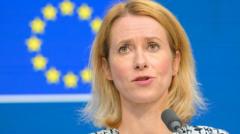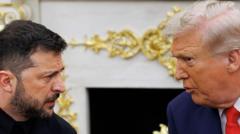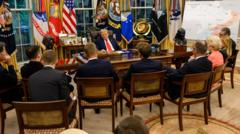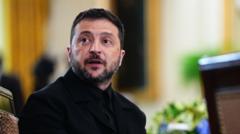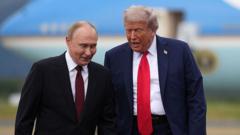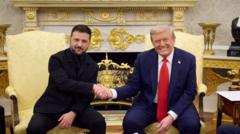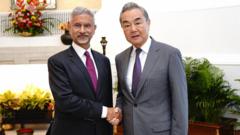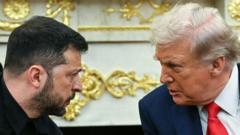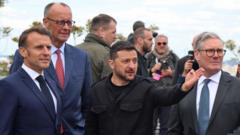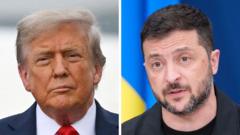As President Trump's tariff strategies evolve, the interplay between key figures like Treasury Secretary Scott Bessent and advisors like Pete Navarro underscores a complex power struggle, reflecting diverse opinions on trade that impact market stability.
The Power Struggle Behind Trump's Tariff Decisions: A Tale of 'Good Cop' Versus 'Bad Cop'

The Power Struggle Behind Trump's Tariff Decisions: A Tale of 'Good Cop' Versus 'Bad Cop'
The shifting dynamics within Trump's administration reveal how differing perspectives on tariffs led to market volatility and political maneuvering.
In recent developments concerning U.S. trade policy, President Donald Trump's administration has found itself in a whirlwind of contradictory messages regarding tariffs. On April 9, amid widespread anticipation, Treasury Secretary Scott Bessent emerged as the face of a significant pivot: the suspension of numerous reciprocal tariffs, a move perceived by some as a vital step away from potential trade conflict. Bessent’s assertion that it took "great courage" to pause the tariffs encapsulates the drama that unfolded as markets surged in reaction to this news.
Notably absent from the briefing post-announcement were pivotal figures such as Commerce Secretary Howard Lutnick and trade adviser Pete Navarro, leading analysts to highlight the emerging hierarchy within the administration's tariff communication strategy. "Bessent is playing the good cop, while Lutnick and Navarro take on the bad cop role," remarked William Alan Reinsch, a trade policy expert. This dynamic emphasizes not just a shift in public messaging, but also a deeper rift in approach — one more amenable to business interests, and another with a hardline stance.
In the lead-up to the abrupt policy shift, Bessent’s significant interactions with business leaders and his pointed discussions with Trump aboard Air Force One likely swayed the President’s decision-making process. Having previously expressed concerns over tariffs and armed with adept knowledge of the bond market, Bessent was able to successfully redirect Trump’s focus, drawing attention to the potential repercussions of his tariff strategy.
On the morning the tariffs were suspended, Trump convened Bessent, Lutnick, and National Economic Council director Kevin Hassett in the Oval Office. However, key players like U.S. Trade Representative Jamieson Greer were notably occupied elsewhere, raising eyebrows about the shifting power dynamics at play. Greer learned about the tariff changes along with lawmakers in a tense Capitol Hill exchange, indicating a disconnect among top officials.
Repeatedly, figures within the administration have presented mixed signals regarding tariff policy, resulting in confusion and market instability. "The administration's messaging has been anything but coherent," stated Mark Sobel, a former Treasury Department official, reflecting concerns over a lack of unified strategy.
While it appears that the goal may be to saturate the media landscape with varied voices, thereby diluting coherent narrative, this approach risks alienating investors, eager for clarity. Terry Haines of Pangaea Policy argued that by having multiple spokespersons, differing views are highlighted, but this could complicate markets further.
As we move forward, experts anticipate an increased role for Bessent in articulating tariff policy, with the expectation that he will serve as the principal figure guiding economic discourse alongside Lutnick’s negotiation efforts. Such a structured approach, they suggest, could ultimately pave the way for greater market confidence and predictability amid an otherwise tumultuous economic landscape.


